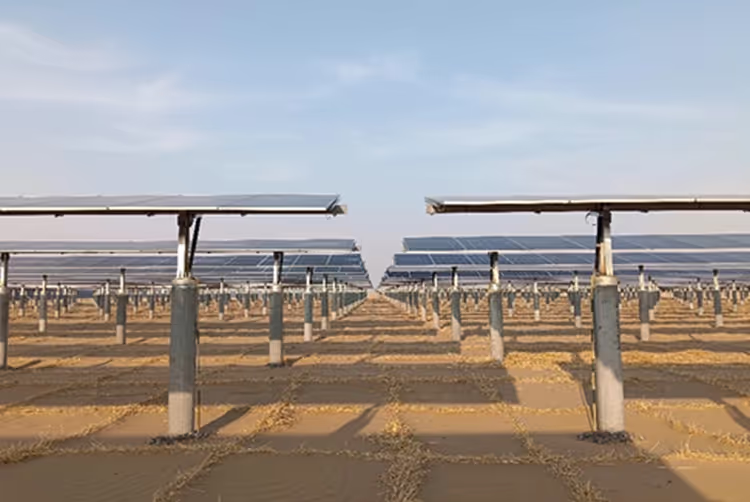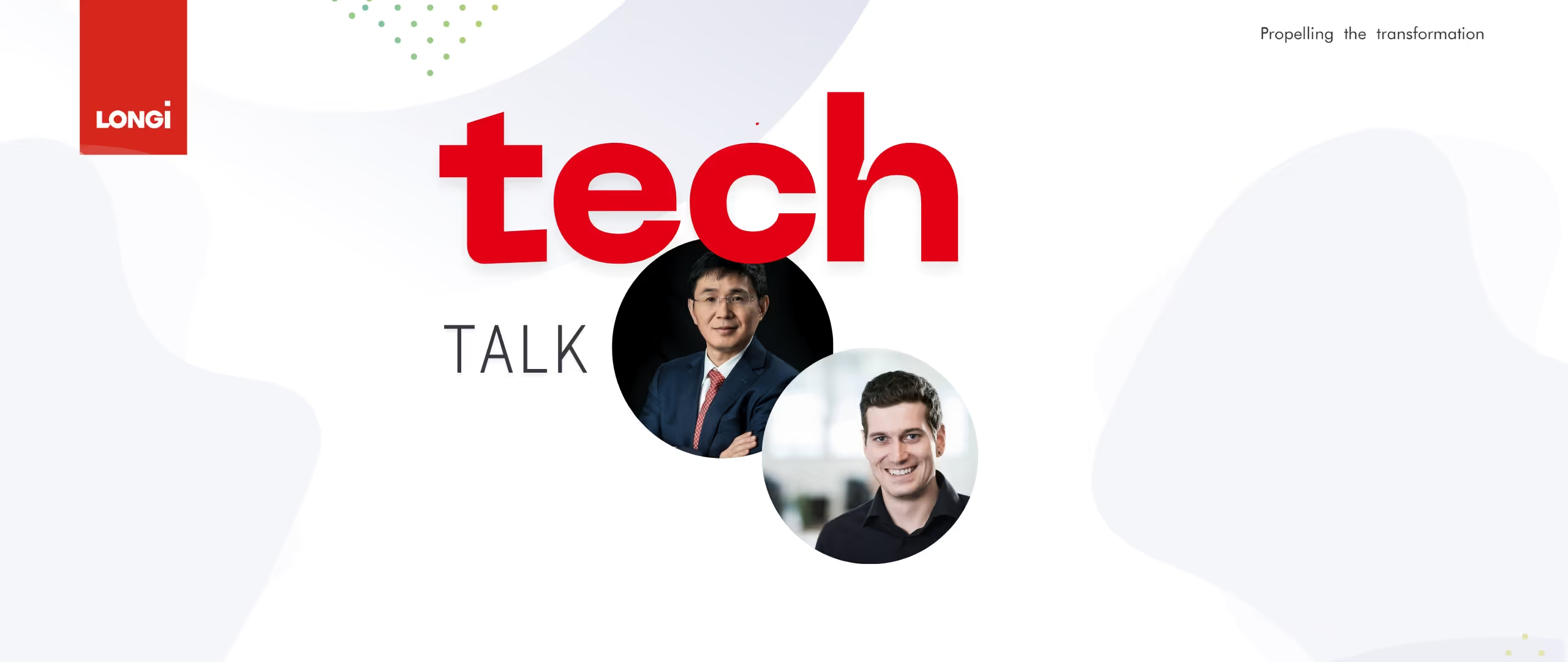Back Contact modules outperform TOPCon by 2.45% in desert conditions

Date
October 13, 2025
read time
3
Minutes
Subscribe to the LONGi Newsletter
Benchmark has been set up to show how utility-scale solar performs in harsh climates
When we push PV systems into extreme environments, the true differences between technologies show up. In a recent large-scale desert PV project in the Inner Mongolia two current PV modules have been tested under identical real-world conditions. The comparison project between LONGi’s HPBC 2.0 back contact (BC) modules (Hi-MO 9 series) and conventional TOPCon modules was led by the Inner Mongolia Energy Group in China. The results are compelling and highly relevant for anyone planning large ground-mounted solar plants, including in Europe’s sunnier or semi-arid regions.

The setting: A harsh desert challenge for two utility PV modules
The test spanned about 1,533 hectares in a desert region of Inner Mongolia. This location offers approximately 3,000 hours of annual sunshine, making it ideal for solar deployment, but it also features extreme environmental stressors: drought, minimal rainfall, extremely high evaporation, frequent sandstorms, and wide temperature swings.
These conditions amplify reliability demands: Modules must maintain performance under dust abrasion, thermal stress, and weather extremes.
To make the comparison fair, the project deployed:
- 640 W BC modules (Hi-MO 9, HPBC2.0 technology)
- 575 W TOPCon modules
All installed at the same site, with identical mounting, orientation, and system balance-of-plant. The performance window of interest spanned April to July 2025.
LONGi’s BC modules deliver higher yield and stronger returns under real desert conditions
Across multiple performance metrics, LONGi’s BC technology showed consistent gains:
- +2.45 % higher energy generation per installed kilowatt
- +9.05 % greater generation per unit area
- Superior low-light performance, especially in June (14 overcast/rainy days), where BC outperformed TOPCon every single day
- June’s monthly yield gain: 2.44 %
These differences are not marginal, but significant in the scale of utility systems, where every fraction of a percentage adds to the project’s value over the years.
From a developer’s or investor’s point of view, those yield gains translate into higher revenue, better returns, and stronger competitiveness.


Why BC modules deliver in rough conditions
Here are some of the technical drivers behind BC’s advantage in this setting.
BC performs better because of:
Reduced shading and better light capture
Because the contacts are on the back side of the cell, front-side shading from busbars or finger lines is eliminated. More light absorption means more current, especially under diffuse or scattered light conditions.
Improved thermal behavior and heat dissipation
Desert environments often combine high irradiation with high temperatures. BC designs tend to moderate operating temperature and reduce hotspots, preserving performance and longevity.
Enhanced resilience
In harsh, dusty, windy environments, module durability matters. The BC architecture can help maintain stable performance under stressed conditions (abrasion, temperature cycles, humidity).
Better ROI over lifecycle
The combination of higher power yield and expected durability means lower levelized cost of electricity (LCOE). For utility-scale plants, this is often the deciding factor, even if upfront module cost is slightly higher.
These advantages also have implications for European and global utility solar
While Europe does not replicate Inner Mongolia’s extreme desert climate, many regions such as southern Spain, Greece, and parts of Italy share characteristics such as high irradiation, periodic dust deposition, and large ground installations.
For developers, EPCs, distributors, and investors, the takeaways are:
- BC technology is no longer experimental or niche. In extreme test conditions, it has now truly proven its edge.
- Yield gains of around 2-3 % under “normal” conditions can swing project economics, especially at utility scale.
- When designing utility PV systems, module choice becomes a differentiator, not just among brands, but among cell architectures.
- The LONGi Inner Mongolia case strengthens the business case for adopting Hi-MO 9 HPBC2.0 modules in large, ambitious PV plants.
Why European PV distributors, system integrators, installers and EPCs should act
At LONGi Europe, we believe that innovation must be field verified to truly matter. The Inner Mongolia desert project gives us a powerful data point. For European markets, we see several pathways forward:
- This benchmark data can be used by distributors and system integrators to inform their module stock planning and client recommendations.
- When pitching large PV plants, installers and EPCs can refer to this verified real-world comparison showing BC’s advantage.
If you're working on a new utility or C&I project or considering module architecture for a challenging environment, our LONGi Europe team is ready to provide further insights and technical consultation.




.avif)